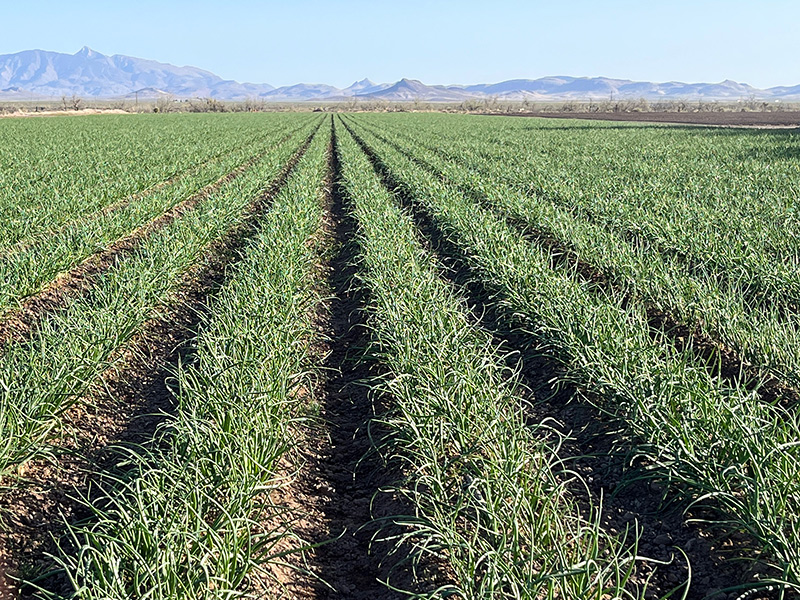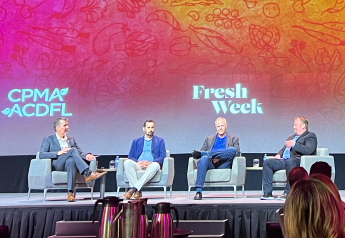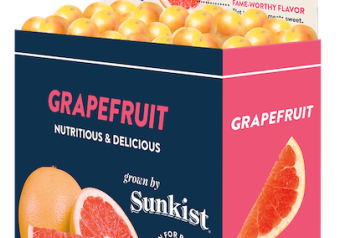Onion volume expected to increase after slow start

The spring/summer season got off to a rather slow start for the onion category, with strong demand triggering higher prices than usual.
Although the official crop report won’t come out until June, Greg Yielding, chief executive for the Eaton, Colo.-based National Onion Association, said there were fewer onions in the market than normal in early May. While supplies remained steady in some areas, weather and a drop in acreage resulted in lower volume in others.
“There was more of a downward trend,” he said.
Suppliers expected volume to increase and prices to dip a bit as additional growing areas come into play.
California, Georgia and Nevada were harvesting onions in early May as picking was winding down in Texas, Yielding said. Several other states, including Michigan, New York and in the northwest, were planting for a fall harvest that will kick off in August.
Mexico is also shipping onions to the U.S. now, he said. Canada typically exports onions to the U.S. in the fall.
Eagle Eye Produce, Idaho Falls, Idaho, expects to harvest red, white and yellow onions out of California’s Imperial Valley until the end of May, said Joe Ange, director of business development. The California deal will then shift to the central part of the state, but Eagle Eye’s primary summer program from June to August will be out of New Mexico.
Yields were looking good in California in early May, and the category was experiencing “very active markets with strong demand,” Ange said.
He expected higher-than-usual prices to level off by mid-June when New Mexico comes into full production.
Edinburg, Texas-based Little Bear Produce, which ships sweet onions, was wrapping up its Texas harvest in early May and planned to transition to New Mexico in June, where it will ship onions until September, said salesman Jeff Brechler. Then the company will import onions from Peru.
Brechler was pleasantly surprised by the quality of this year’s early crop.
“Right now, from the pictures that I’ve seen and the reports that I’ve gotten, the crop looks really, really good,” he said in early May. “The plants are healthy, they’re growing, and we’re looking forward to good yields and good sizing.”
Because the Texas growing area experienced a freeze at Christmastime, Brechler was prepared for a less-than-stellar crop.
“I thought that we were going to see an increased seed-stem population,” he said, “but we really didn’t, which is kind of surprising.”
The company even packed some super colossals, he said.

Little Bear Produce also has had a small organic program for five years, Brechler said. He described organic business as “steady.”
“Organic is rather cult-like,” he said. “I don’t know how much elasticity there is in the pricing of organics.”
Yields are not as great for organic onions as they are for conventional product, so it costs more to produce them.
Brechler estimated that organic onions are priced 20% to 30% more than conventional ones.
He said he’s not sure if, during these inflationary times, retailers are trying to keep consumer prices down by lowering their margins and trying to make up the difference with conventional onions.
Related: What's the difference between spring onions and scallions?
Idaho Falls, Idaho-based Wada Farms Marketing Group is now in the middle of its California deal, shipping a number of mostly short-day varieties, said John Vlahandreas, national onion sales director.
The torrential rain the state experienced did not have much of an effect on California’s Imperial Valley onion deal, he said, but cold weather delayed the start of the crop by about 10 days — to the first week of May instead of the usual start around April 20.
The cooler weather won’t affect quality, but it could impact sizing.
Wada Farms probably will ship more jumbo and medium sizes than colossals and super-colossals out of California, he said.
The company’s acreage also will be down slightly.
“Demand should exceed what is out there,” Vlahandreas said. And that should spark “a little spike in pricing.”







